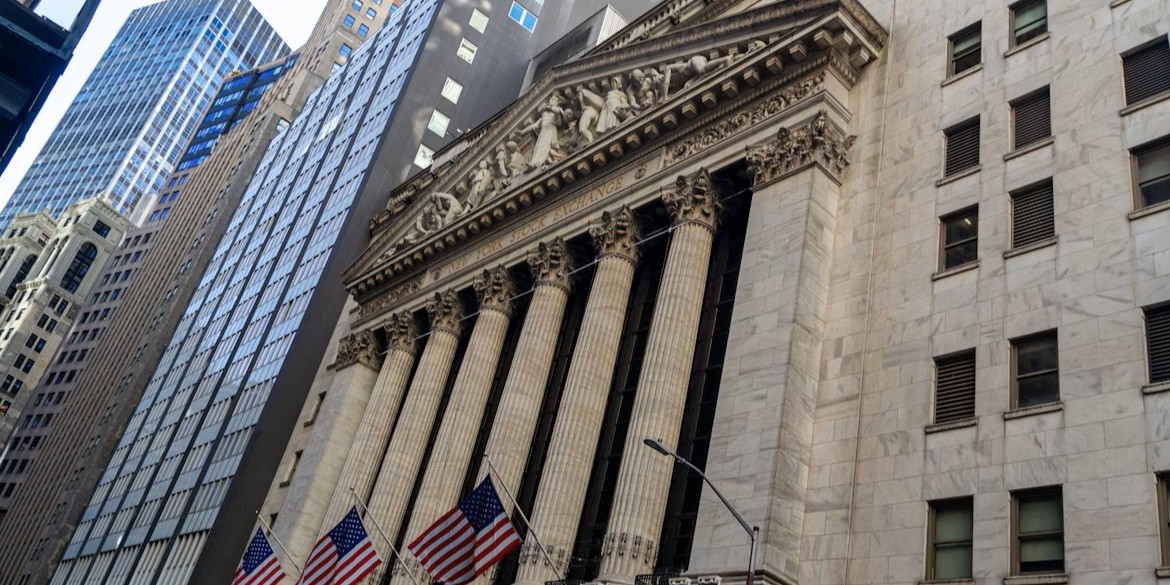U.S. financial markets closed with a mixed performance on October 7, 2025, as the S&P 500 and Nasdaq Composite notched record highs despite ongoing uncertainty surrounding the federal government shutdown. While strong merger and acquisition activity buoyed investor sentiment, broader concerns over fiscal gridlock, inflationary pressures, and Federal Reserve policy continued to weigh on the mood across Wall Street.
The Dow Jones Industrial Average ended the day slightly lower, snapping a modest three-day winning streak, while the S&P 500 edged up just enough to close at a new all-time high. The Nasdaq, driven by gains in technology and digital asset-related stocks, also climbed to record levels. Analysts said the divergence reflected a tug-of-war between optimism about corporate deal-making and anxiety about the macroeconomic outlook.
Trading volume was relatively thin as investors kept one eye on Washington, where the federal government shutdown entered its second week amid a prolonged budget standoff. Lawmakers remained deadlocked over spending priorities, with no immediate breakthrough in sight. While past shutdowns have had limited long-term economic impact, analysts warned that an extended impasse could begin to slow consumer spending, delay government contracts, and dampen business confidence.
“Markets are holding up remarkably well, but that resilience is being tested,” said Ellen Zhao, senior market strategist at Horizon Capital. “The longer the shutdown continues, the greater the potential drag on sentiment, particularly if it intersects with uncertainty around future rate policy.”
Despite these headwinds, corporate activity offered a glimmer of optimism. Investors cheered a string of acquisition announcements and merger discussions, which injected new life into the equity markets. The healthcare and technology sectors led the gains, buoyed by reports of multibillion-dollar consolidation deals that investors interpreted as signs of confidence in future growth. Analysts said the deal-making spree indicated that corporate America remains flush with cash and willing to pursue strategic expansion even in an uncertain policy environment.
The S&P 500 finished the session up 0.2%, extending its year-to-date gain to more than 18%. The Nasdaq Composite climbed roughly 0.4%, helped by continued enthusiasm for technology shares, while the Dow Jones Industrial Average slipped 0.1%, reflecting losses in industrial and consumer discretionary names.
Among individual movers, Boeing Co. shares rose 1.6% after reports surfaced that the aerospace manufacturer plans to increase production of its 737 Max aircraft. The move signaled renewed confidence in the aviation sector’s recovery, following several years of supply chain disruptions and fluctuating travel demand. Analysts at RBC Capital Markets said Boeing’s production ramp-up “could mark a pivotal moment for the company’s turnaround strategy,” particularly as global airlines refresh their fleets in anticipation of strong 2026 travel demand.
Meanwhile, Coinbase Global (COIN) also posted a 1.6% gain, tracking the surge in cryptocurrency prices as Bitcoin hit a new all-time high near $125,245.57. The milestone represented another psychological boost for investors in the digital asset space, which has seen renewed mainstream attention amid growing institutional adoption and an influx of capital into blockchain-based financial infrastructure. Coinbase, the largest U.S.-based crypto exchange, has benefited from the recent resurgence in trading volumes and market participation.
Tech heavyweights such as Apple, Nvidia, and Microsoft also posted modest advances, contributing to the Nasdaq’s outperformance. Investors continue to favor companies positioned at the intersection of artificial intelligence, cloud computing, and digital services — sectors that have powered much of the market’s gains throughout 2025. The so-called “Magnificent Seven” tech giants remain the primary drivers of index performance, though analysts caution that concentration risk remains high.
However, not all sectors shared in the rally. Financials and industrials lagged, with bank stocks slipping amid uncertainty over regulatory guidance and credit market volatility. Energy shares also softened as oil prices stabilized near $65 per barrel following OPEC+’s announcement of a cautious production increase. The Federal Reserve’s upcoming communications later this month are expected to provide further clues about the central bank’s approach to balancing inflation control with economic growth.
Inflation data remains a critical factor for market direction in the coming weeks. Although headline inflation has moderated from its 2023 highs, core measures remain elevated, prompting speculation that the Federal Reserve may hold interest rates higher for longer. Fed Chair Jerome Powell has reiterated the central bank’s commitment to a data-driven approach, but markets remain split over whether the next move will be a rate cut or a continued pause.
“Investors are trying to parse through mixed signals,” said David Rinehart, chief economist at Silvergate Advisors. “On one hand, corporate earnings have been strong, and M&A activity signals confidence. On the other, the macro picture — inflation, the shutdown, fiscal uncertainty — continues to create noise that keeps markets from breaking decisively higher.”
The bond market reflected this cautious sentiment. Yields on the 10-year U.S. Treasury note held steady near 4.3%, while shorter-term yields rose slightly, suggesting expectations of tighter liquidity conditions in the near term. The U.S. dollar index edged lower, providing some relief to exporters and multinational firms, while gold prices inched up as investors sought a modest hedge against policy risk.
In the broader context, Wall Street’s mixed close underscores the market’s resilience amid crosscurrents of optimism and caution. The record highs in the S&P 500 and Nasdaq highlight investor belief in the underlying strength of corporate earnings and innovation-driven sectors, even as political uncertainty looms large.
Looking ahead, traders will be watching closely for updates on the government funding negotiations and key inflation data expected later this month. A resolution to the shutdown could unleash a wave of renewed confidence, while prolonged gridlock may test the market’s patience further. For now, investors appear willing to balance short-term turbulence with long-term conviction in the U.S. economy’s adaptability.
As one trader on the floor of the New York Stock Exchange put it, “This market wants to rally — it just needs Washington to get out of its way.”
Read Also: https://todayus.com/wall-street-hits-record-highs-as-feds-aggressive-rate-cut-sparks-market-rally/


